以雕塑和公共工程,野口勇also designed stage sets for various Martha Graham productions, not to mention several mass-produced lamps and furniture pieces, some of which are still manufactured and sold.
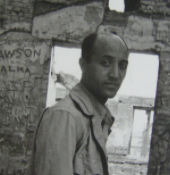
Image source:https://search.creativecommons.org/photos/f809a6e7-cb53-400a-bd46-2b84583a8f7bbyMichael Francis McCarthy
Biography
Isamu Noguchi, born in1904in Los Angeles to the Japanese poetYone Noguchiand the American writerLeonie Gilmour, studied at Columbia University and the Leonardo da Vinci Art School.
He subsequently established his first independent studio, receiving a Guggenheim Fellowship in1927. Noguchi became an assistant toConstantin BrancusiinParis, before presenting his first solo exhibition in New York. After studying brush drawing in China, he travelled to Japan to work with clay under the master potterJinmatsu Uno.
His experiences living and working in different cultural circles are reflected in Isamu Noguchi’s work as an artist. He is considered a universal talent with a creative oeuvre that went beyond sculpture to encompassstage sets,furniture,lighting, interiorsas well asoutdoor plazasandgardens. His sculpting style is indebted to a vocabulary of organic forms and exerted a sustained influence on the design of the1950s.
My Father, Yone Noguchi is Japanese and has long been known as an interpreter of the East and West, through poetry. I wish to do the same thing through sculpture
– Written in Noguchi’s proposal for a Guggenheim Fellowship.
Isamu Noguchi died in New York in1988.
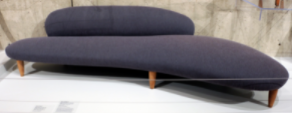
Image source:https://search.creativecommons.org/photos/1e34d9de-421a-469b-8419-a049f0edba6fbySailko
In1947, Noguchi began a collaboration with theHerman Millercompany, when he joined withGeorge Nelson,Paul LászlóandCharles Eamesto produce a catalog containing what is often considered to be the most influential body of modern furniture ever produced, including the iconic Noguchi table which remains in production today. His work lives on around the world and at theNoguchi MuseuminNew York City.
Everything is sculpture
Noguchi made his beliefs on his profession very clear:
Everything is sculpture, any material, any idea without hindrance born into space, I consider sculpture.
Noguchi believed the sculptor’s task was to shape space, to give it order and meaning, and that art should “disappear,” or be as one with its surroundings. Perhaps it was his dual heritage, his father was a Japanese poet, his mother a Scottish-American writer, that resulted in his way of looking at the world with an eye for “oneness.”
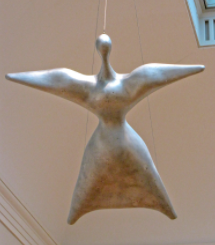
Image source:https://search.creativecommons.org/photos/cbc83b87-f609-4703-9f36-9c13e404dd8cbymark6mauno
Noguchi created sculptures that could be as abstract asHenri Moore‘s or as realistic asLeonardo‘s. He used any medium he could get his hands on: stone, metal, wood, clay, bone, paper, or a mixture of any or all—carving, casting, cutting, pounding, chiseling, or dynamiting away as each form took shape.
“To limit yourself to a particular style may make you an expert of that particular viewpoint or school, but I do not wish to belong to any school […]I am always learning, always discovering.
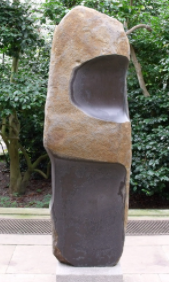
Image source:https://search.creativecommons.org/photos/a965cdd2-372e-46db-a07f-689d914e1df5bypuffin11uk
Key ideas
The overarching concept informing Noguchi’s work was his passionate, career-long desire to create art the public could use in a social space. He realized this goal in myriad ways: mass produced furniture and lamps; theatrical set designs; public projects such as gardens, playgrounds and fountains; and sculptural manipulations of the natural landscape.
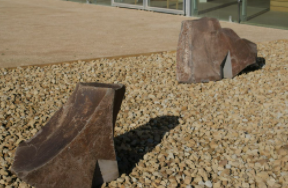
Image source:https://search.creativecommons.org/photos/b58bd520-8974-4c37-9fad-3befad34e566bypuffin11uk
Noguchi wanted to call attention to thedichotomiesinherent in much of his work: he mergedgeometricandorganicforms, found value in both positive and negative space, and created works that challenged the boundaries of design and art. He also integrated the materials and art forms of both his Japanese and American heritages into his innovative creations.
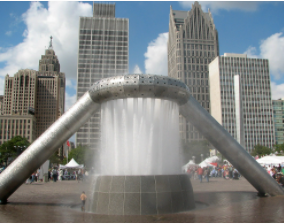
image source:https://search.creativecommons.org/photos/46a3a143-13e1-4ab4-8df7-2409ae7b09d4byDave Hogg
Noguchi was socially and artistically connected toAbstract Expressionism, as evident not only in his large-scale works evoking abstracted forms but also in his friendships withArshile GorkyandWillem de Kooning. Yet, his sculpture retained a distinct sensibility in its use of natural materials and its distinct blend of Surrealist and Japanese influence.
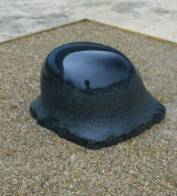
Image source:https://search.creativecommons.org/photos/1997b2d5-bee5-4e12-ae8a-2f71efc1288dbypuffin11uk
Most important works
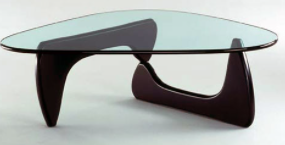
Image source:https://search.creativecommons.org/photos/b951d5d6-1403-4263-bfa6-ad842cd30a93bylartnouveauenfrance
Noguchi first encountered Japanese gardens during his visits to his father’s birth land in the1930s. By the1950she began to design his own unique gardens. The designed garden became a crucial concept for his sculptural landscapes, which he saw as a means to integrate art into social environments. He viewed his work as a “sculpture of spaces,” rather than a collection of discrete pieces.
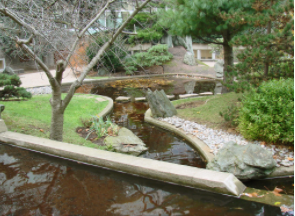
Image source:https://search.creativecommons.org/photos/241446c8-110e-4d18-a99b-ad1e9ce6a786bydalbera
Jardin Japonais, forUNESCOheadquarters inParis, was his first major landscape commission. Noguchi felt that gardens should be experienced as nature untouched, so he included elements such as overall organic shapes and lanterns made of natural stone. He arranged the carefully selected Japanese stones by drawing on both Japanese tradition and his own unique design, fusing his skill as a designer with his high regard for the natural world. The fact that Noguchi’s patron was the United Nations for a French location speaks to the international reputation, and high regard for the artist and his ability to represent the highest ideals of this international entity. The final result would come to be known as theJardin Japonais.
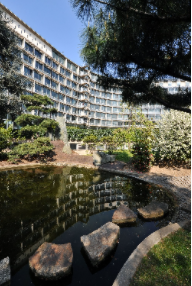
In the1940s, Noguchi produced his first illuminated sculptures,Lunars, having previously explored the idea of sculpting with light. His Lunars demonstrate how the artist continued to draw upon Surrealist-inspired biomorphic shapes, and were comprised of magnesite and light bulbs. In 1951 Noguchi expanded his basic formula to create hisAkari Lamp,working at the request of the mayor of Gifu, Japan, to modernize the local lantern designs. The results have been both exhibited and mass produced since1955.
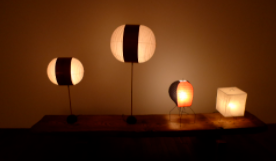
Image source:https://search.creativecommons.org/photos/49948cc6-be81-4258-936f-8573428f7cfdbyfocusc
Noguchi envisioned his Akari (which means “light as illumination”) as two sculptures – both the outward form of the sculpture itself and the resulting shapes created by the emitted light. For Noguchi, light was another type of medium with which to work, one that challenged the idea of materiality through its fundamental ethereality, and which radiated both the natural and industrial worlds.
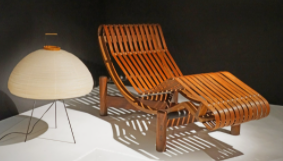
Image source:https://search.creativecommons.org/photos/939aacf8-4699-412b-8137-1a9caae36018bydalbera
Located within the garden at theNoguchi Museumin New York,The Welldemonstrates Noguchi’s mastery of natural elements, and the strong presence of a Japanese aesthetic. Noguchi worked with stone his entire life, first learning how to carve while an assistant to Constantin Brancusi. Noguchi produced his final stone sculptures at his studio on Shikoku Island, Japan, where he worked with the local basalt stone. The Well perfectly balances modernism with traditional Japanese stonework, the man made with the natural. The piece unites natural contrasts: the fluidity and transparency of water against the still, solid black stone. Filtered up from below, the water gently skims the surface of The Well; there is a slight indentation on top that pools with water before cascading downwards. Noguchi sensually combines natural elements, creating a work that is both contemplative, but joyous.
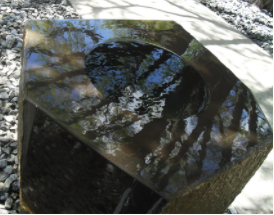
Image source:https://search.creativecommons.org/photos/dc844c0f-338b-4a0e-84a4-14cf9bc51784byJules Antonio
Awards
He was awarded theEdward MacDowell Medalfor outstanding lifelong contribution to the arts (1982), theKyoto Prize in Arts(1986), and theNational Medal of Arts(1987). TheIsamu Noguchi Garden Museum, which opened inLong Island City, New York, in1985, includes an outdoor sculpture garden and a collection of some500sculptures, models, and photographs.
Info sources:
https://www.britannica.com/biography/Isamu-Noguchi
https://www.vitra.com/en-it/corporation/designer/details/isamu-noguchi
https://en.wikipedia.org/wiki/Isamu_Noguchi
https://www.hermanmiller.com/designers/noguchi/
http://www.theartstory.org/artist-noguchi-isamu.htm
http://www.theartstory.org/artist-noguchi-isamu-artworks.htm#pnt_9
